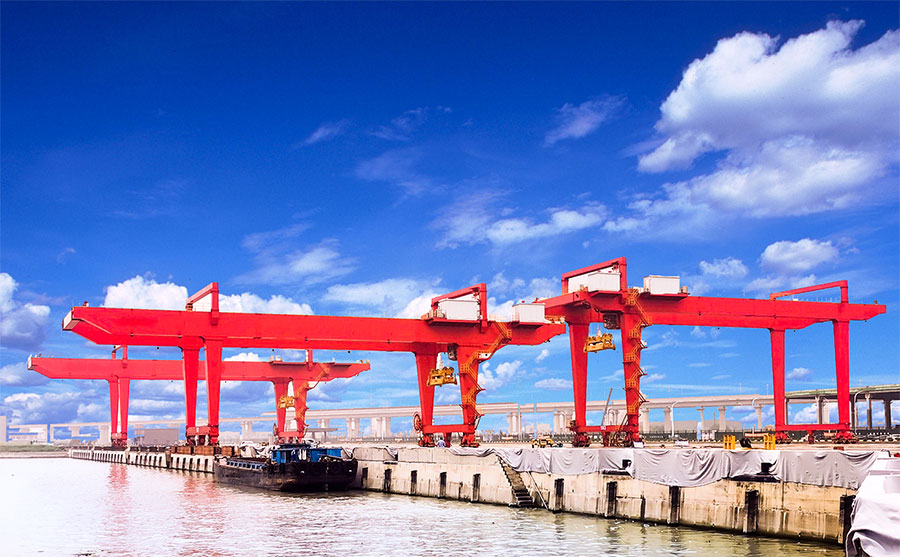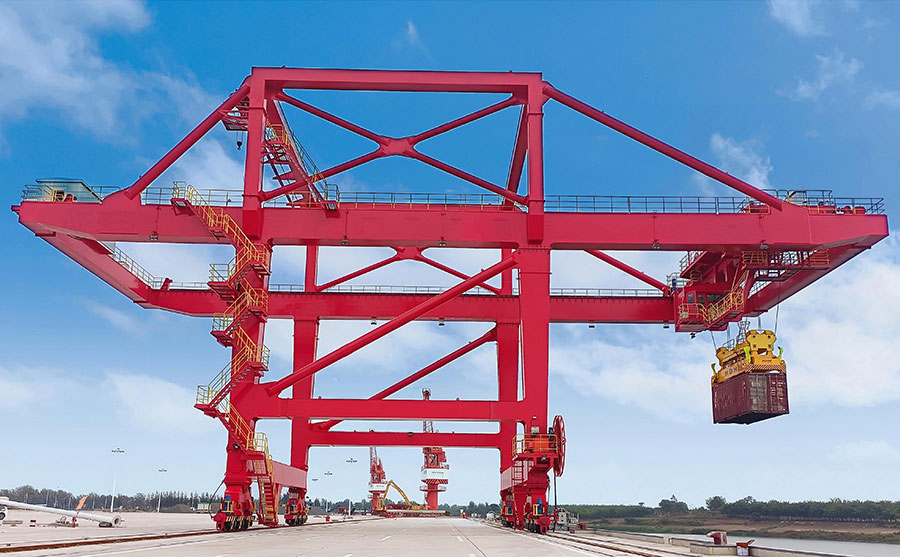In the fast-paced world of container logistics, efficiency, safety, and scalability are critical to maintaining smooth operations. As global trade expands and container throughput grows, many terminal operators face the challenge of scaling their container yards to meet increasing demand without sacrificing productivity or safety. One of the most effective ways to achieve this is by adding Rail Mounted Gantry (RMG) cranes to your yard operations.
This article will guide you through the key considerations, benefits, and practical steps to scale your container yard operations effectively with additional RMG cranes.

Understanding the Role of RMG Cranes in Container Yard Operations
RMG cranes are large, rail mounted gantry cranes used primarily for stacking and moving shipping containers in container yards and terminals. Their rail-mounted design provides excellent stability and high load capacity, making them ideal for heavy-duty container handling. Typically spanning multiple container rows, they move along fixed rails, efficiently loading, unloading, and stacking containers.
As container volumes increase, a single or limited number of RMG cranes may no longer be sufficient to maintain throughput targets or meet service-level agreements (SLAs). Adding more RMG cranes allows for parallel operations, reduced wait times, and improved overall yard productivity.
Why Scale with Additional RMG Cranes?
1. Increased Handling Capacity
Adding RMG cranes increases the yard’s overall container handling capacity. Each additional crane can work independently or in coordination with others to manage more containers simultaneously, reducing bottlenecks during peak periods.
2. Improved Operational Efficiency
Multiple RMG cranes reduce container dwell times by speeding up loading and unloading processes. With faster turnaround, trucks and vessels spend less time waiting, enhancing customer satisfaction and terminal reputation.
3. Enhanced Flexibility and Redundancy
More cranes provide operational flexibility. If one crane requires maintenance or experiences downtime, others can maintain operations without significant disruption. This redundancy is crucial for meeting tight schedules and avoiding costly delays.
4. Optimized Yard Space Utilization
Additional rail mounted container gantry cranes enable more efficient container stacking strategies, increasing stacking density and yard utilization. This is vital when expanding the physical yard area is not feasible due to space or cost constraints.
5. Support for Larger or More Complex Terminals
As your container yard grows in complexity – adding more rows, lanes, or specialized handling zones—additional RMG cranes ensure the infrastructure keeps pace, enabling smooth container flow across expanded operations.

Key Considerations When Adding RMG Cranes
Scaling with RMG cranes is not just about buying new equipment; it requires comprehensive planning and integration. Consider the following factors to ensure a smooth and effective expansion:
1. Yard Layout and Rail Infrastructure
RMG cranes operate on fixed rails. Adding cranes often means extending or upgrading the rail infrastructure. Evaluate whether your existing rails can support additional cranes or if you need to install new rails and switches for multiple crane operation.
Tip: Plan the rail layout to minimize interference between cranes and allow optimal maneuverability.
2. Crane Specifications and Compatibility
Ensure new cranes are compatible with your existing fleet in terms of span, lifting height, load capacity, and control systems. This compatibility simplifies training, maintenance, and spare parts management.
3. Power Supply and Energy Efficiency
Additional cranes increase power demand. Assess your yard’s power infrastructure and consider energy-efficient technologies like regenerative drives or hybrid power systems to manage electricity costs sustainably.
4. Operational Coordination
With multiple RMG cranes operating simultaneously, you need robust coordination to prevent collisions and maximize throughput. Advanced control systems with automation and remote monitoring can help coordinate crane movements and optimize workflows.
5. Training and Workforce Adaptation
More cranes mean more operators and maintenance staff. Invest in comprehensive training programs to ensure safety and efficiency. Consider implementing operator simulators or remote control options to reduce risks and enhance skill levels.
6. Maintenance and Support
Scaling up also increases maintenance complexity. Plan for preventive and predictive maintenance strategies, sufficient spare parts inventory, and responsive service support to minimize downtime.
Steps to Scale Your Container Yard with Additional RMG Cranes
Step 1: Conduct a Yard Capacity and Needs Assessment
Begin by analyzing your current container volumes, peak demands, and future growth projections. Identify bottlenecks in container handling and yard space utilization to quantify how many additional cranes you need and their specifications.
Step 2: Evaluate Existing Infrastructure
Assess your current rail tracks, power systems, control technology, and yard layout. Identify required upgrades or expansions necessary to support additional cranes.
Step 3: Develop a Scaling Plan
Work with equipment suppliers and engineering consultants to draft a detailed scaling plan, covering:
-
Crane specifications and procurement timelines
-
Rail and power infrastructure upgrades
-
Control system integration and automation
-
Safety measures and operator training
-
Budgeting and financing
Step 4: Procure and Install Additional RMG Cranes
Choose cranes based on your needs assessment, preferably from gantry crane suppliers who offer customization options and after-sales support. Installation should be phased to minimize disruption, with thorough testing and commissioning before full deployment.
Step 5: Integrate Control and Automation Systems
Implement or upgrade control software to coordinate multiple cranes. Consider automation technologies like collision avoidance, load monitoring, and remote operation to enhance safety and efficiency.
Step 6: Train Operators and Maintenance Teams
Provide targeted training on new cranes and control systems. Include safety protocols, troubleshooting, and routine maintenance procedures. Continuous learning and certifications ensure long-term operational excellence.
Step 7: Monitor, Optimize, and Scale Further
After deployment, continuously monitor crane performance and yard productivity using digital monitoring tools. Use data analytics to optimize crane scheduling and routes. Plan for further scaling if volume growth continues.
Real-World Examples of Scaling with RMG Cranes
Example 1: Major Container Terminal in Asia
A busy Asian port expanded its container yard capacity by adding five new RMG cranes alongside an existing fleet of seven cranes. By upgrading the rail tracks and implementing a centralized crane control system, the terminal achieved a 30% increase in throughput with improved stacking density and reduced truck waiting times.
Example 2: European Intermodal Yard
An intermodal rail yard in Europe doubled its RMG cranes from four to eight to handle increasing container volumes from rail connections. This expansion, combined with operator retraining and automation upgrades, enabled seamless 24/7 operations with minimal downtime and enhanced safety records.
Conclusion
Scaling your container yard operations with additional Rail Mounted Gantry cranes is a strategic investment that can deliver significant improvements in capacity, efficiency, and reliability. However, it requires thorough planning, infrastructure readiness, and workforce adaptation to realize these benefits fully.
By carefully assessing your needs, upgrading infrastructure, coordinating crane operations, and leveraging advanced technologies, you can ensure your container yard grows in step with your business, meeting customer demands and staying competitive in a dynamic logistics environment.
Ready to expand your container yard’s capacity with additional RMG cranes? Contact our experts today for a tailored solution that fits your operational goals and budget. Let Aicrane help you unlock the full potential of your container terminal!